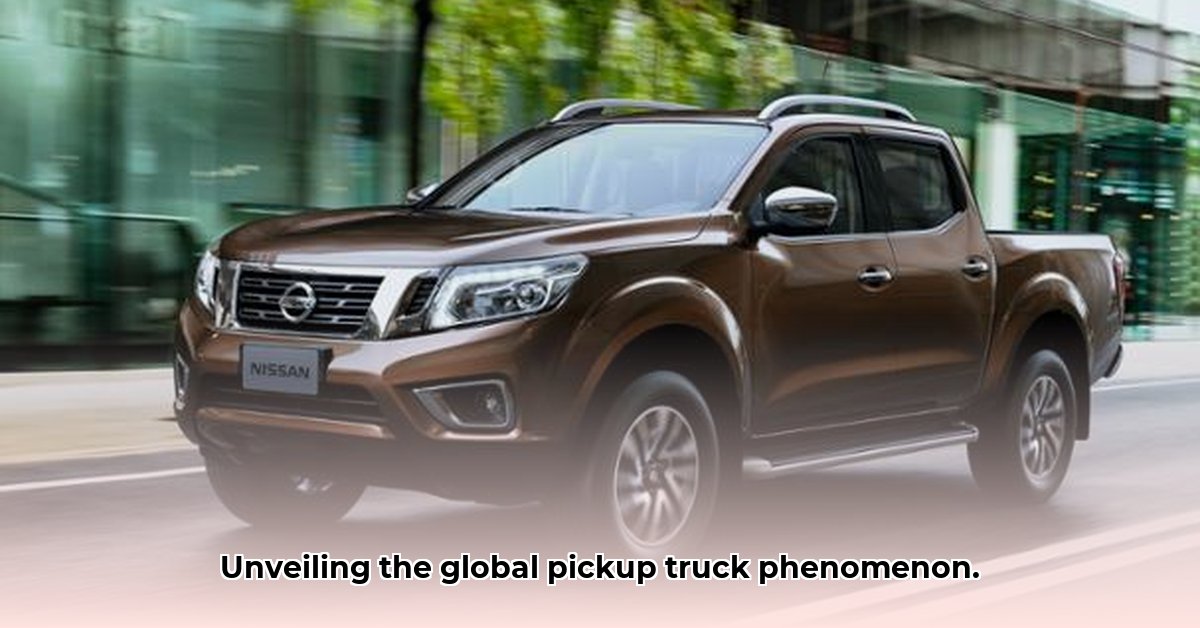
A Global Workhorse: Understanding the Nissan NP300's Evolution
The Nissan NP300—known as the Navara in many regions and the Frontier in North America—represents a compelling case study in global automotive adaptation. This isn't just a single pickup truck; it's a family of vehicles, each tailored to the specific needs and preferences of diverse markets. Its enduring success hinges on Nissan's ability to balance global brand identity with regional customization. This article delves into the NP300's evolution, examining its design, engineering, and safety features across generations and geographic locations. For a comparison with another global pickup, check out the Mazda BT-50.
A World of Differences: Regional Variations and Their Impact
One of the most striking aspects of the NP300's story is its engine variety. While some markets prioritized robust, older gasoline engines, others embraced fuel-efficient diesel options. This reflects local fuel costs, environmental regulations, and driver preferences. For example, North American buyers often favoured powerful V6 gasoline engines, while European buyers frequently chose fuel-efficient diesel alternatives. How did this diversity in powertrains affect driving experience? Did customers in different regions perceive significant differences in performance or fuel economy? Further research is needed to fully understand these regional nuances.
From Boxy Beginnings to Sleek Modernity: A Design Odyssey
The NP300's design has undergone a significant transformation. Early models, such as the D21, sported a boxy, utilitarian aesthetic. Later generations, like the D23, adopted a more aerodynamic and sleek design. Even within a single generation, subtle regional design variations existed, revealing Nissan's careful attention to local aesthetic preferences. This evolutionary design path showcases Nissan's strategic understanding of global consumer trends and their ability to maintain a consistent brand identity while catering to regional tastes.
Safety First: Navigating a World of Different Standards
Safety regulations differ widely across the globe. Early NP300 models faced criticism in some regions for comparatively lower safety ratings. However, subsequent generations, particularly the updated Frontier, saw considerable improvements in safety features and ratings, showcasing Nissan's commitment to enhancing global safety standards. What was the impact of these safety upgrades on customer perception and sales? A comprehensive analysis of sales data in relation to safety ratings would provide valuable insights.
Under the Hood: A Powertrain Story of Adaptation
The NP300's engine choices across its history reflect advancements in automotive technology. Earlier models typically employed naturally aspirated engines, while later generations incorporated turbocharging and advanced fuel injection systems. However, this drive for better fuel efficiency and reduced emissions likely influenced performance trade-offs. Some experts contend that turbocharged engines, while often more efficient, may lack the same low-end torque as their naturally aspirated counterparts – a crucial factor for a work truck requiring significant pulling power. This highlights how Nissan likely balanced fuel economy and performance requirements based on the target market's specific usage scenarios.
Global Reach, Global Production: A Manufacturing Network
The NP300's production spans multiple continents, including plants in Japan, Spain, Thailand, and Mexico. This global manufacturing footprint enhances cost efficiency and allows for greater responsiveness to regional demands. However, this geographically dispersed production strategy raises questions about potential variations in quality control and consistency across different manufacturing sites. A detailed examination of manufacturing processes and quality control across these locations is necessary to assess the impact of localized production on vehicle quality and uniformity.
A Smart Strategy? Market Segmentation for Success
At different times, Nissan offered multiple NP300 generations concurrently, effectively segmenting the market by catering to various price points. The discontinuation of the D22 in Japan suggests Nissan's approach to adapting to changing consumer preferences and market competitiveness. How effective was this multi-generational strategy over the long term? An in-depth analysis of sales figures for each model in respective markets is needed to provide a clear answer.
What's Next for the NP300? A Look into the Future
The automotive industry is undergoing a period of significant transformation driven by stricter emissions regulations and the growing popularity of electric vehicles. Given its history of adaptation, it is likely that future iterations of the NP300 will embrace hybrid or fully electric powertrains. The emergence of electric pickup trucks is undeniable and Nissan's integration of this technology into the NP300 lineage will be pivotal for its continued success. The challenge will lie in balancing the demand for ruggedness and capability with the push towards greener technology.
Regional Differences: A Comparative Overview
| Region | Engine Options | Safety Ratings (Examples) | Key Features | Typical Fuel Preference |
|---|---|---|---|---|
| North America | V6 Petrol, Inline 4 Petrol/Diesel | IIHS/NHTSA Ratings | Rugged design, powerful engines | Gasoline |
| Europe | Various Diesel Engines | Euro NCAP Ratings | Advanced safety features, fuel efficiency | Diesel |
| Asia/Australia | Diverse Diesel and Petrol Options | ANCAP Ratings | Various trim levels, cost-effective solutions | Diesel and Gasoline |
| South America | Diesel Engines Primarily | Latin NCAP Ratings | Adaptability to various terrains and conditions | Diesel |
This table highlights the significant regional variations in the NP300's configuration. The NP300's enduring success serves as a testament to Nissan's capacity to effectively analyze and respond to diverse global market needs. Its ongoing evolution ensures its continued competitiveness within the dynamic pickup truck landscape.